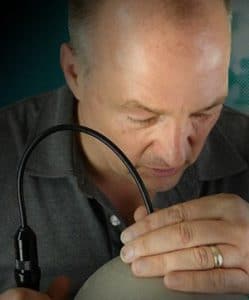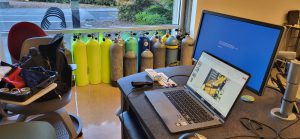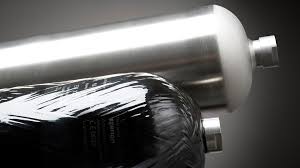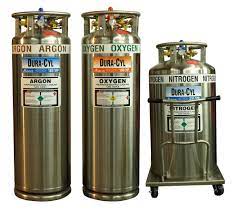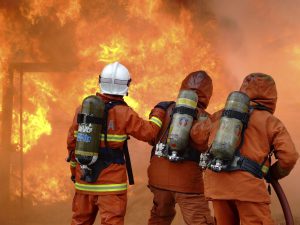
Additionals Charts
|
When dealing with cylinders most people are aware of the dangers of pressure. Any time you compress a gas into a rigid container there are hazards of a potential rupture. When filling a cylinder, you have the potential hazards of line ruptures, unsecured cylinders or the concern of over-pressurization. There are other hazards that must be taken into consideration when dealing with high pressure cylinders. When handling cylinders there are times that the cylinder must be drained. Draining a cylinder has its own hazard; excessive noise. Allowing a quantity of compressed gas to escape through a very tiny orifice (valve) creates noise that is nothing less than piercing. The amount of noise can be registered by the number of decibels and exceeding a certain number of decibels can damage the human ear.
Government safety agencies have developed charts warning persons of the amount of noise which can be safely tolerated over a given period. 115 decibels can only be tolerated for a few minutes without causing damage. For reference see the attached charts from different organizations around the world.
No matter which chart or countries rules you choose to follow, 100-115 decibels are the level that most groups agree hearing damage can be caused if listened to beyond just a few minutes. It is also recognized that for every 3 decibels above a threshold, the potential for damage is increased (Johnson, Papadopoulos, Takala – EXPOSURE CRITERIA, OCCUPATIONAL EXPOSURE LEVELS.)
So how loud can escaping gas become, when draining from a cylinder through a valve. Many factors can influence the decibel level; the pressure within the cylinder, the size of the orifice, the quantity of gas, the size of the room, present insulation, outside noise, the rate of depressurization…. etc…..etc…). I decided to invest in a moderately priced decibel meter with recording capabilities to determine a general number / decibel level while draining compressed air from a cylinder.
To limit my personal exposure to the length of noise I chose a small cylinder (19 cu/ft at a service pressure of 3000 psi / 206 Bar). I then used a standard SCUBA valve with a single small orifice. I did not have the ability to measure the size of the orifice. I would guess that the size of the orifice was similar to other high-pressure devices. The size of the orifice might also match the size of rupture point in a ruptured pressure relief device. Keep in mind, with the data I collected, it would not meet scientific scrutiny. It was done in a general environment, with general conditions, using basic recording techniques. I attempted to simulate similar actions a few times, but not everyone is perfect.
I placed the cylinder in a room approximately 12’ X 6’ by 10’ tall. The decibel meter was within 2 feet of the cylinder. The tests were run with little or no change to the environment. I ran tests with no muffler devices and with a muffler device, designed to lower the decibel levels. In most cases it took approximately 2 minutes to drain the cylinder.

Without a muffling device the Peak decibel reading I obtained were 126 decibels and 127 decibels. However, this peak was only for a second or two before the readings dropped as the pressure was reduced. The longest peak readings were in the 120-decibel range. The ranges between 90 and 127 lasted approximately 2 minutes.
There are many muffler devices, both manufactured and homemade. A muffler device may reduce the rate of pressure reduction, slowing the process and noise. Or the muffler may dissipate the escaping gas, reducing the decibel level. Something as simple as placing a towel over the valve can reduce the decibel levels within an environment.
Using a muffling device, the highest decibel range I reached was 120 which quickly (within one second) reduced to 108 decibels. The average decibel level using a muffler was 90 decibels reducing to as low as 70 decibels within 2 minutes.
Averaging my data and a quick review I would say that a non-muffled cylinder is 120 decibels during its peak and a muffled cylinder is 80 decibels during its peak time. Referring to the charts and standards, 120 decibels is NOT recommended at any time. Readings in the 80-decibel range can be tolerated for 8 + hours.
When draining any cylinder, some type of muffler device should be mandated by the facility. Placing an unmuffled cylinder in another room, only separated by a door, would not be recommended. Placing numerous draining cylinders in the same room for a period of time would also be strongly discouraged. Facilities can supply hearing protection but ensuring that everyone is wearing such protection is difficult.
The best solution is to use a muffling device. That is the only certain way to guarantee that the decibels levels stay within a safe range. When draining a cylinder, use a muffler device for everyone’s safety.

